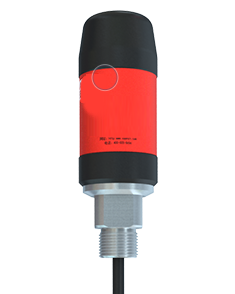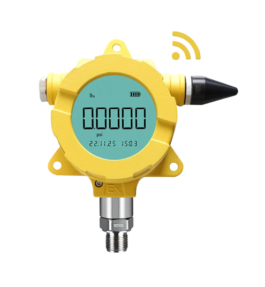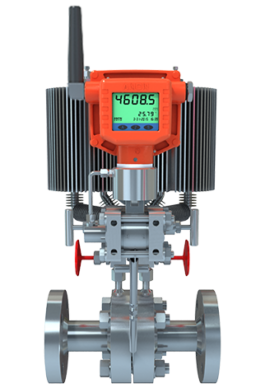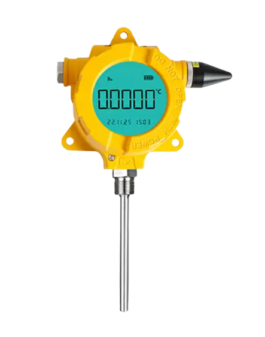Description
Wireless instrument Antenna which can be connected with the wired instrument and turns it into the legal wireless sub device. It then effectively solves the seamless connection between the wireless network and the wired network.
Moreover, It provides users with a standard analog input interface and can be customized with an RS485 communication protocol interface. This will synchronous data acquisition with other sensors, instruments, equipment, access networks, etc.
Industrial Grade
Also, the Wireless instrument Antenna adopts high performance industrial grade processor, and industrial class wireless communication module and integrates nowadays the most popular way of wireless industrial communications: ZigBee, and Wireless HART, the stability of the embedded operating system as a software support platform, provides data acquisition monitoring and data transmission function for the user.
Encryption
In addition, adopting the AES-128 encryption algorithm, making the data strong security and reliable, has improved the exception handling mechanism, and ensured the equipment in the field has the most reliable data transmission path.
A wireless instrument antenna is a vital component used to transmit and receive signals wirelessly for various instruments such as musical instruments, scientific instruments, and communication devices. This antenna is designed to be lightweight, portable, and efficient in ensuring reliable communication over long distances without the need for physical connections.
One popular type of wireless instrument antenna is the dipole antenna. A dipole antenna consists of two conductive elements aligned parallel to each other and equidistant from the center. This antenna is commonly used due to its simple design and balanced signal transmission and reception. Dipole antennas can be either omnidirectional or directional, depending on the specific requirements of the instrument.
Loop Antenna
Another type of wireless instrument antenna is the loop antenna. A loop antenna is a closed loop of conducting material, often in the form of a loop or coil. Its shape enables it to capture magnetic fields and convert them into electrical signals. Loop antennas are often used in instruments that require sensitivity to magnetic fields, such as metal detectors or MRI machines.
Patch Antenna
A third type of wireless instrument antenna is the patch antenna. A patch antenna is a flat, thin, and compact antenna usually affixed to a surface such as a circuit board or the instrument’s body. These antennas are commonly used in communication devices such as smartphones and tablets due to their small form factor and ease of integration. Patch antennas can be designed to operate in specific frequency ranges, making them suitable for different wireless communication standards.
Specific Frequencies
Wireless instrument antennas are typically designed to operate in specific frequency ranges depending on the intended application. Common frequency ranges include radio frequencies (RF), microwave frequencies, and even higher-frequency domains such as millimeter waves for advanced applications. These antennas are carefully engineered to exhibit desirable characteristics, including impedance matching, gain, directivity, and radiation pattern, to ensure efficient signal transmission and reception.
Transmitters and Receivers
To achieve wireless communication, the instrument antenna must be paired with a compatible receiver or transceiver. In most cases, the antenna is connected to a transceiver module, which integrates both transmitting and receiving functionalities. The transceiver module contains circuitry to amplify, filter, and modulate the signals before being transmitted or received by the antenna. The combination of the antenna and transceiver enables wireless communication by converting electrical signals into electromagnetic waves for transmission, and vice versa for reception.
When utilizing a wireless instrument antenna, it is imperative to consider several factors that can affect its performance. These factors include antenna placement, orientation, interference from surrounding objects or other wireless devices, and environmental conditions. For optimal performance, antennas should be positioned in locations with minimal signal obstructions and interference to maximize signal strength and quality.
Intelligent Antennas
Advancements in wireless communication technologies have led to the development of more efficient and intelligent antennas. For example, smart antennas utilize technologies such as adaptive beamforming and multiple-input-multiple-output (MIMO) to enhance signal reception and transmission. These antennas can dynamically steer their radiation pattern and actively suppress interference, allowing for improved signal clarity and increased data throughput.
In conclusion, a wireless instrument antenna is a crucial element in establishing reliable wireless communication for various instruments. Whether it is a dipole antenna, loop antenna, or patch antenna, these antennas play a vital role in transmitting and receiving signals wirelessly. By considering factors such as frequency range, antenna design, and environmental conditions, one can maximize the performance of a wireless instrument antenna and ensure optimal wireless communication capabilities.
For other wireless requirements?
Flow Meters that are wireless
Wireless Pressure Transmitter
Temperature sensors that are wireless
Wireless Pressure Transmitters
Instrument Gateways
Specifications
Characteristics of a Wireless Instrument Antenna
- Support a variety of network topologies such as star, tree, mesh, etc.
- The system is flexible and reliable, with the mechanism of data alarm priority, data mutation priority, address priority, and so on
- Also, the network has the function of self-adaptation, and it can find the best communication path without manual intervention.
- In addition, the Network expansion can restructure, when the network faces obstacles, it can automatically find the best way to find the best communication path
- 4GHz universal frequency can be subdivided into 16 channels
- Furthermore, with the expansion of frequency hopping technology, unique anti-interference ability increases the reliability of communication.
- In Conclusion, wireless communication, without wiring, saves labor and construction costs and improves efficiency.
Product Parameters
Wireless Spectrum
ZigBee:ISM(2.4~2.5)GHz(IEEE 802.15.4 DSSS)
Wireless HART:ISM(2.4~2.5)GHz(IEEE 802.15.4 DSSS)
Wireless Authentication
Zigbee:FCC ID: MCQ-XBS2C,IC: 1846A-XBS2C
WirelessHART: IEC 62591 HART, GB/T 29910.1~6-2013 HART
Wireless Protocol
Zigbee:Zigbee 2007(Compatible with CNPC’S A11-GRM Communication Protocol )
Wireless HART: IEC62591
Receive Sensitivity
ZigBee:-100dBm
Wireless HART:-95dBm
Transmit Power
ZigBee:8dBm(6.3mW)
WirelessHART:8dBm(6.3mW)
Communication Distance
ZigBee:300m、800m
WirelessHART:300m、800m
Network Security
AES-128 encryption algorithm, network authentication, and network authorization
Anti-Interference Ability
Automatic frequency hopping
Input Interface
ZigBee:(0~20)mA、(4~20)mA、(0~5)V、RS485、RS232(Support Protocol Customization )
WirelessHART:(4~20)mA、Hart V7
Power Supply: 10~30VDC
Whole System Power: < 1W
Environmental Temperature:(-30~70)℃
Relative Humidity: <90%
Atmospheric Pressure:(86~106)kPa
Protection Grade: IP65
Installation: Bracket, Thread
Antenna: Built-in Antenna
Overall Dimension(mm)
Q&A
Q: What role do wireless antennas play in industrial instruments?
A: Wireless antennas serve as essential components in industrial instruments by enabling wireless communication between devices, sensors, and control systems in industrial settings.
Q: How do wireless antennas enhance industrial instrument performance?
A: Wireless antennas improve industrial instrument performance by providing reliable wireless connectivity, enabling real-time data transmission, remote monitoring, and control of industrial processes.
Q: What are some common types of wireless antennas used in industrial instruments?
A: Common types of wireless antennas used in industrial instruments include omnidirectional antennas, directional antennas, patch antennas, yagi antennas, and helical antennas, each suited for specific communication requirements.
Q: How can wireless antennas improve flexibility and mobility in industrial applications
A: Wireless antennas eliminate the need for physical wiring connections, allowing for flexible and mobile installation of industrial instruments, sensors, and control systems in dynamic industrial environments.
Q: What factors should be considered when selecting wireless antennas for industrial instruments?
A: Factors to consider include the communication range, signal strength, interference resistance, frequency band compatibility, antenna type, polarization, and environmental conditions specific to the industrial application.
Q: Can wireless antennas be integrated with industrial control systems for automation?
A: Yes, wireless antennas can be seamlessly integrated with industrial control systems, PLCs, SCADA systems, and IoT platforms to enable wireless control, monitoring, and automation of industrial processes.
Q: How do wireless antennas enhance safety and efficiency in industrial environments?
A: Wireless antennas contribute to improved safety and efficiency in industrial environments by enabling remote monitoring, predictive maintenance, and real-time data analytics for enhanced decision-making and operational performance.
Q: What are the challenges associated with deploying wireless antennas in industrial instrumentations?
A: Challenges may include signal interference, signal attenuation over distances, environmental factors like obstructions and reflections, regulatory compliance, security concerns, and ensuring robust wireless connectivity in harsh industrial conditions.
Feel free to ask if you have more specific questions or need further information on wireless antennas in industrial instrument applications!
Advantages / Disadvantages
Advantages of a wireless instrument antenna
Mobility and Convenience
A wireless instrument antenna enables instruments to be used without the constraints of physical cables or connections. This provides greater mobility, allowing users to move freely and perform without restrictions.
Easy Setup
Since wireless antennas eliminate the need for physical connections, setup becomes quick and straightforward. Instruments can be connected to compatible transceivers or receivers without the hassle of routing cables or worrying about cable length limitations.
Flexibility
With wireless instrument antennas, instruments can be positioned at optimal locations without the limitations of cable length. This flexibility allows for optimal signal reception and transmission, resulting in improved performance.
Enhanced Aesthetics
Wireless antennas eliminate the visual clutter of cables, improving the overall aesthetics of an instrument. This can be particularly beneficial for live performances, presentations, or any situation where a clean and professional appearance is desired.
Reduced Signal Loss
Physical cables can introduce signal loss due to attenuation as the signal travels through the conductor. Wireless instrument antennas minimize or eliminate this issue, resulting in better signal quality and reliability.
Disadvantages of a wireless instrument antenna
Limited Range
Wireless instrument antennas have a finite range over which they can transmit and receive signals effectively. The range can vary depending on the specific antenna design, operating frequency, and environmental conditions. Users must ensure they stay within the range of the antenna to maintain a reliable connection.
Signal Interference
Wireless communication can be susceptible to interference from other devices, such as Wi-Fi networks, Bluetooth devices, or even environmental factors like electromagnetic interference. These sources of interference can degrade the signal quality and result in intermittent or poor performance.
Power Consumption
Wireless instrument antennas typically require a power source, such as batteries or external power supplies, to operate. The power consumption of the antenna can vary depending on its design, frequency of use, and range requirements. Users need to ensure they have sufficient power to support uninterrupted wireless communication.
Setup and Compatibility
While wireless instrument antennas offer convenience, they may require additional setup steps, such as pairing or configuring the antenna with the instrument or transceiver. Users may also encounter compatibility issues when trying to connect different wireless devices or antennas.
Cost
Wireless instrument antennas can be more expensive compared to their wired counterparts. The advanced technology and engineering required to ensure efficient wireless communication contribute to the higher cost. However, as wireless technology becomes more prevalent, the cost of wireless instrument antennas is gradually decreasing.
Overall, the advantages of wireless instrument antennas, such as mobility, convenience, and flexibility, often outweigh the disadvantages. Nevertheless, users should consider the specific requirements of their instruments, the expected range, and potential sources of interference before opting for wireless communication.
Applications
Wireless antennas play a crucial role in enabling the communication between wireless transmitters and receivers by transmitting and receiving electromagnetic signals. They are essential components in wireless communication systems, including applications such as:
Wi-Fi Networks: Wireless antennas are commonly used in Wi-Fi routers and access points to provide wireless connectivity within homes, offices, public spaces, and other environments.
Cellular Networks: Antennas are used in cellular base stations and mobile devices to enable voice and data communication over mobile networks, including 4G LTE and 5G.
Satellite Communication: Antennas are utilized in satellite communication systems for broadcasting, telecommunications, weather monitoring, and remote sensing applications.
RFID Systems: Radio-frequency identification (RFID) systems rely on wireless antennas to enable contactless identification, tracking, and data transfer in various industries, such as supply chain management and access control.
IoT Devices: Antennas are integrated into Internet of Things (IoT) devices for wireless connectivity, allowing smart devices to communicate and exchange data over short-range or long-range wireless networks.
Wireless Sensing Applications: Antennas are used in wireless sensor networks for applications such as environmental monitoring, structural health monitoring, and industrial automation.
Point-to-Point Communication: Antennas facilitate point-to-point communication links in applications like backhaul connections for network infrastructure, video surveillance, and telecommunication networks.
Public Safety Communication: Antennas are utilized in public safety communication systems, such as police, fire, and emergency services, to ensure reliable wireless communication during critical situations.
Remote Monitoring and Control: Antennas enable wireless communication in remote monitoring and control systems, including utility monitoring, agricultural automation, and smart grid applications.
Military and Defense: Antennas are critical components in military communication systems, radar systems, electronic warfare applications, and satellite communication for defense and national security purposes.
These are just a few examples of the diverse applications where wireless antennas are used in conjunction with wireless transmitters to establish reliable and efficient wireless communication links for various purposes. Antennas play a fundamental role in ensuring seamless connectivity and data transmission in wireless systems across different industries and sectors.
Download
Drawings




